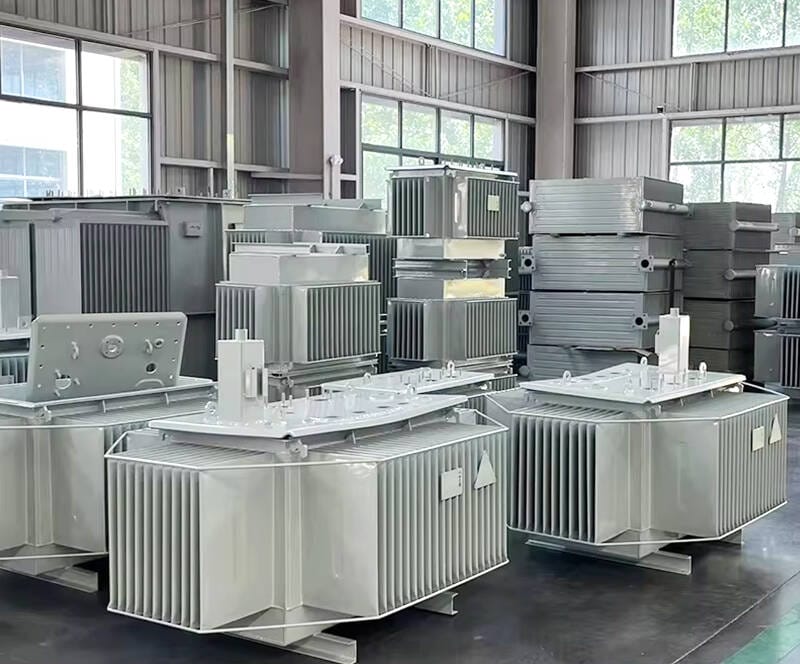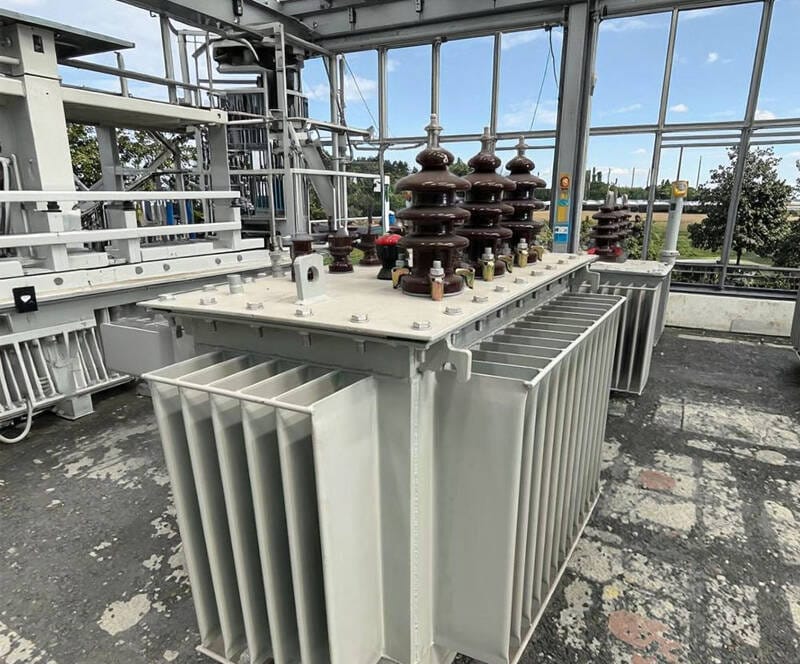What is a Dry Type Transformer?
1. Definition and Basic Concept
A Dry-Type Transformer, as the name suggests, is a type of transformer where thecore and windings are not immersed in insulating oil but are directly exposed to air or another gas environment, cooled by air convection or a forced air cooling system. Compared to traditional oil-immersed transformers, its most significant characteristic is “oil-free operation.”
Precisely because there is no oil, dry-type transformers inherently offer advantages such asexcellent fire resistance, no pollution, and easy maintenance. They are very suitable for installation in densely populated areas, underground structures, public facilities, or locations with strict fire safety requirements.
2. Main Characteristics of Dry-Type Transformers
- High Safety: Oil-free design avoids the risks of oil leakage and fire.
- Good Environmental Performance: Does not produce harmful gases or pollute the environment.
- Flexible Installation: No need for fire protection ponds or isolation zones; can be installed directly at the load center.
- Low Maintenance Cost: Minimal daily maintenance required; no need for regular oil quality testing.
- Long Service Life: High-quality insulation systems effectively extend the equipment’s operational lifespan.
However, they also have some limitations, such as: larger physical size for the same capacity, limited heat dissipation capability, and typically higher cost compared to oil-immersed transformers.
3. Common Types
Based on structure and manufacturing process, dry-type transformers can be classified into the following categories:
- Epoxy Resin Cast (Cast Resin Dry-Type Transformer, CRT)
- High and low voltage windings are fully cast in epoxy resin, forming a solid insulation body.
- Advantages: Strong resistance to moisture, dust, and contamination; can operate reliably in environments with up to 95% humidity.
- Disadvantages: Relatively poor heat dissipation; sensitive to temperature changes.
- Applications: High-rise buildings, subways, airports, shopping malls, and other densely populated areas.
- Vacuum Pressure Impregnated (VPI)
- Windings are impregnated with insulating varnish under vacuum and pressure, then cured at high temperatures to form a solid insulation layer.
- Advantages: Mature process, good heat dissipation, high thermal class.
- Disadvantages: Moisture resistance is not as good as cast resin type.
- Applications: Industrial plants, general public buildings.
- Open Winding Type (Non-encapsulated)
- Windings are exposed on the surface, relying on natural air convection or fan-assisted cooling.
- Advantages: Simple structure, lower cost.
- Disadvantages: Poor resistance to pollution and humidity; not suitable for harsh environments.
- Applications: Locations with relatively small loads and good environmental conditions.
4. Development Trends
With the development of green energy and smart grids, dry-type transformers are evolving in the following directions:
- Higher Insulation Classes: Use of more advanced insulating materials to extend lifespan and enhance safety.
- Low-Loss Design: Optimizing core materials and processes to reduce energy consumption.
- Intelligent Monitoring: Adding sensors and IoT capabilities for real-time temperature, load, and humidity monitoring.
- Increased Capacity: Breaking traditional capacity limits, gradually being applied to higher power scenarios.
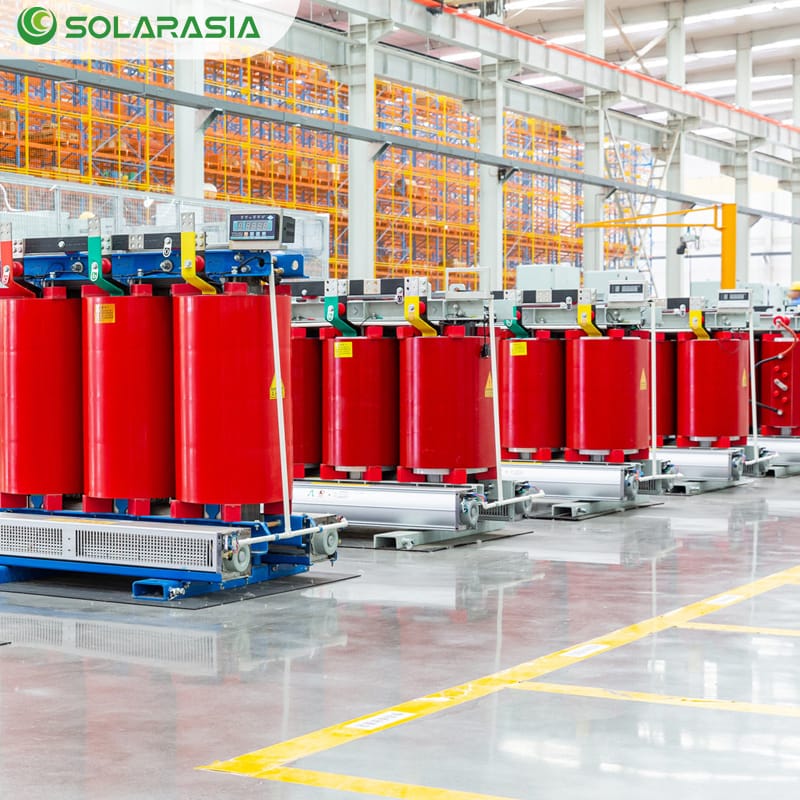
The Insulation System of a Dry Type Transformer
1. Role of the Insulation System
During transformer operation, potential differences exist between the high-voltage and low-voltage windings, and between the windings and the core.The core function of the insulation system is to isolate conductors at different electrical potentials, ensure safe power transmission, and prevent breakdown and short circuits.For dry-type transformers, the insulation system is even more critical because it does not rely on oil for cooling and insulation; almost all insulation and protection are provided by solid materials and air.
In short, the reliability of the insulation system directly determines the lifespan and safety of a dry-type transformer.
2. Common Insulating Materials
Dry-type transformers typically use composite material systems, including:
- Epoxy Resin: Widely used in cast resin transformers, it encapsulates the windings to form a solid insulation body with advantages of moisture, dust, and contamination resistance.
- Glass Fiber: Combined with resin, it provides high mechanical strength and heat resistance. Often used in high-voltage windings.
- Polyester Film: Offers excellent electrical insulation properties and flexibility, commonly used for inter-layer insulation in low-voltage windings.
- Nomex Paper (Aramid Insulation Paper): Extremely high temperature class (up to 220°C), good flame retardancy, often used in Class H transformers.
- Mica Tape, Insulating Varnish, etc.: Used for local reinforcement of insulation and protection.
These materials are usually not used alone but are combined to build composite insulation systems to meet different voltage levels and usage environments.
3. Insulation Class Classification
International standards (IEC, IEEE) classify insulation systems based on their temperature tolerance:
- Class B (130°C): For常规 applications, suitable for general environments.
- Class F (155°C): Better heat resistance, most widely used.
- Class H (180°C): Suitable for high-temperature or harsh environments.
- Class C (220°C and above): Often uses high-performance materials like Nomex paper, mainly for special requirement scenarios.
In practice, the insulation class not only determines the transformer’s temperature tolerance but also affects its service life. Generally, for every 6–8°C increase in temperature, the insulation life is halved. Therefore, selecting the appropriate insulation class during specification is particularly important.
4. Process and Structure
The insulation system of a dry-type transformer is not just a stack of materials; it relies heavily on advanced processes:
- Vacuum Pressure Impregnation (VPI): Windings are placed in a vacuum tank, where insulating varnish fully penetrates coil gaps under alternating vacuum and pressure, followed by high-temperature curing. Advantages include uniform insulation and high mechanical strength.
- Vacuum Casting (Cast Resin): Epoxy resin is poured into a mold under a vacuum environment, curing to form a solid monoblock. Advantages include moisture, contamination, and crack resistance.
- Layered Insulation Design: Adding multiple layers of insulating film or paper between windings to improve dielectric strength.
- Local Reinforcement: Additional wrapping or thickening of insulation at positions prone to electrical stress (e.g., line ends, corners).
These processes ensure the dry-type transformer maintains insulation stability over long-term operation, preventing failures caused by local breakdowns.
5. Advantages of the Insulation System
Compared to oil-immersed transformers, dry-type transformer insulation systems offer these significant advantages:
- Fire and Explosion Proof: Solid insulating materials are non-combustible; the absence of oil eliminates fire risk.
- Moisture Resistant: High-quality epoxy resin castings can operate normally even at 95% humidity.
- High Mechanical Strength: The insulation body is tightly integrated with the windings, offering strong impact resistance.
- Simple Maintenance: No need for regular replacement or testing of insulating oil, only routine inspection required.
6. Application Considerations
- In high humidity or high dust environments, epoxy cast resin transformers should be prioritized.
- For high-temperature, frequent overload scenarios, Class H or higher insulation systems should be selected.
- In projects with large capacity or strict energy efficiency requirements, cooling methods and insulation design must be considered together.
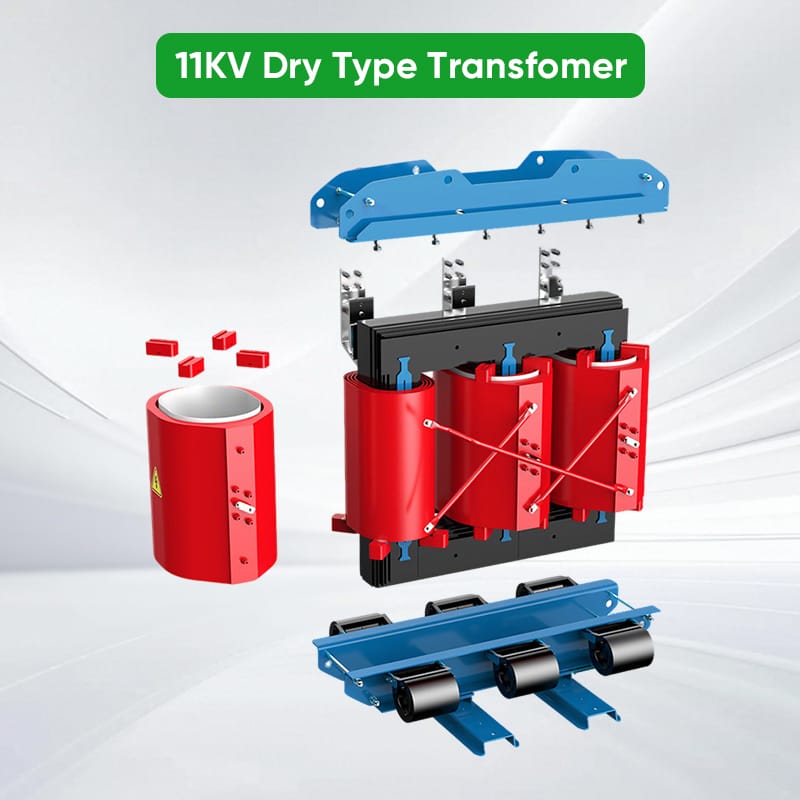
How a Dry Type Transformer Works
1. Basic Principle
The working principle of a dry-type transformer is the same as that of a traditional oil-immersed transformer, both based onFaraday’s Law of Electromagnetic Induction:
- Primary Side Input: When AC power is applied to the high-voltage winding, current flows within the winding, generating alternating magnetic flux.
- Flux Transfer: The magnetic flux forms a closed magnetic circuit in the core, almost entirely transferring to the low-voltage winding.
- Secondary Side Output: The alternating magnetic flux induces a voltage in the low-voltage winding, enabling the transfer of electrical energy from high voltage to low voltage (or vice versa).
Formula: U₁/U₂ = N₁/N₂
Where U₁ and U₂ are the high and low voltages, and N₁ and N₂ are the number of turns in the high and low voltage windings, respectively.
This law ensures that the dry-type transformer can efficiently and safely transmit electrical energy between different voltage levels.
2. Main Components
The basic structure of a dry-type transformer consists of thecore, windings, insulation system, and cooling system:
- Core: Made of laminated high-permeability silicon steel sheets, responsible for transferring magnetic flux and reducing losses.
- Windings: Made of copper or aluminum conductors, divided into high-voltage and low-voltage windings for input and output, respectively.
- Insulation System: Uses materials like epoxy resin, glass fiber, and Nomex paper to isolate high and low voltage parts, ensuring electrical safety.
- Cooling System: Relies on natural air convection (AN) or forced air cooling (AF) to dissipate heat, ensuring the windings and core operate within safe temperature limits.
Compared to oil-immersed types, dry-type transformers eliminate the need for an oil tank and radiators, making the structure more compact and environmentally friendly.
3. Cooling and Heat Dissipation Methods
Due to the absence of oil, dry-type transformers must rely on air or fans for cooling. Common cooling methods include:
- Natural Air Cooling (AN, Air Natural)
- Uses natural air convection to carry away heat.
- Suitable for applications with stable loads and smaller capacities.
- Advantages: Quiet, energy-saving; Disadvantages: Limited heat dissipation efficiency.
- Forced Air Cooling (AF, Air Forced)
- Fans are installed on the transformer surface or in ducts to force air movement.
- Can increase operational capacity by approximately 30%–40%.
- Commonly used for large capacity or highly variable load scenarios, such as industrial plants and data centers.
Additionally, some high-end dry-type transformers are equipped withintelligent temperature control systemsthat use temperature sensors to monitor winding temperature in real time and automatically activate fans when temperatures become too high, ensuring operational safety.
4. Differences from Oil-Immersed Transformers
Although the principle is the same, due to different cooling methods, dry-type transformers differ in operational characteristics from oil-immersed types:
- Heat Transfer Path:
- Oil-immersed: Transfers heat through oil circulation, high散热efficiency.
- Dry-type: Relies on air convection, relatively lower thermal conductivity.
- Overload Capacity:
- Oil-immersed: Stronger overload capability, suitable for long-term high-load operation.
- Dry-type: Limited overload capability, temperature rise must be strictly controlled.
- Environmental Adaptability:
- Oil-immersed: More suitable for high-capacity, outdoor applications.
- Dry-type: Suitable for indoor, densely populated areas, and locations with high fire safety requirements.
5. Visualizing the Working Process
Think of a dry-type transformer as an “electrical energy transfer station”:
- The Core is the “magnetic field highway.”
- The Windings are the “channels for electrical energy input and output.”
- The Insulation System is the “isolation barrier,” preventing short circuits.
- The Cooling System acts like the “air conditioning system,” maintaining a stable internal temperature.
The synergistic action of these four components allows electrical energy to be transferred from one end to the other safely, stably, and efficiently.
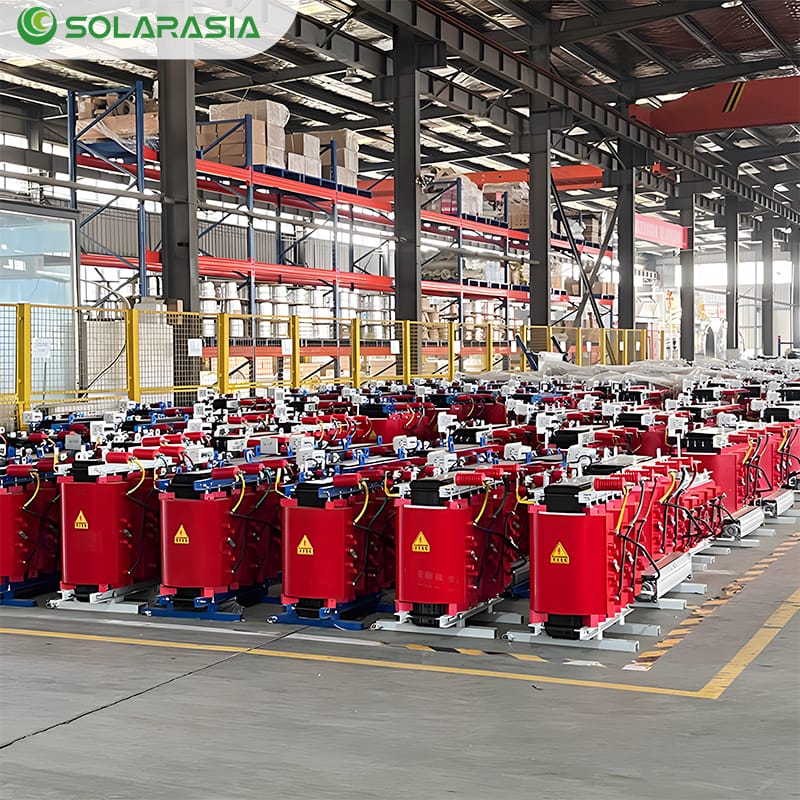
How to Choose the Right Dry Type Transformer
While dry-type transformers offer advantages in safety and environmental friendliness, improper selection can lead to low operational efficiency, reduced lifespan, or even failure. Proper selection requires comprehensive consideration ofelectrical parameters, operating environment, energy efficiency requirements, and long-term operational maintenance costs.
1. Capacity and Voltage Level
- Capacity (kVA/MVA)
- Too small capacity → Prone to long-term overload, leading to excessive temperature rise and accelerated insulation aging.
- Too large capacity → Increased investment cost and no-load losses, poor economy.
- Recommendation: Select based on load calculation (considering 10%~20% margin), combined with future expansion needs.
- Voltage Level
- Common high-voltage levels include 6kV, 10kV, 35kV, etc.; the low-voltage side is usually 0.4kV.
- Must strictly match the grid voltage standards to avoid equipment malfunction due to voltage mismatch.
2. Insulation Class
- Class B (130°C): Suitable for general environments with low temperature requirements.
- Class F (155°C): Most widely used, good heat resistance, relatively long lifespan.
- Class H (180°C) and above: Suitable for high temperatures, fluctuating loads, or harsh environments.
When selecting the insulation class, consider:
- Ambient Temperature (e.g., whether basements, enclosed equipment rooms have good heat dissipation).
- Service Life Requirements (general projects 15–20 years, large infrastructure requires longer).
3. Cooling Method
- Natural Cooling (AN):
- Relies on air convection, low noise, low energy consumption.
- Suitable for smaller capacities and stable load locations.
- Forced Air Cooling (AF):
- Equipped with fans, can increase operational capacity by 30%–40%.
- Suitable for large capacities and highly variable load applications like industrial workshops and data centers.
- Note: Fans require their own power supply and increase maintenance costs.
4. Protection Level (IP Rating)
The protective capability of a dry-type transformer’s enclosure is usually indicated by anIP Code:
- IP20: Prevents finger contact with live parts, suitable for most indoor locations.
- IP23: Adds protection against dripping water compared to IP20, suitable for damp or environments with slight water spray.
- Higher Levels (e.g., IP54): Dust and water-resistant, but cost increases; suitable for special environments.
Selection should be based on the actual installation environment, for example:
- Subway stations, underground parking garages → Start from IP23.
- Ordinary office buildings, hospitals → IP20 is sufficient.
- Industrial, mining, or coastal environments → Recommend higher protection levels.
5. Energy Efficiency and Losses
- No-Load Losses: Energy consumed by the transformer even without load, mainly from core magnetization losses.
- Load Losses: Losses caused by winding resistance heating when the transformer is under load.
Priority should be given to products complying with international energy efficiency standards (e.g., EU Eco Design, US DOE, IEC 60076), which can significantly reduce long-term electricity costs.
For locations with long operating hours and high electricity prices (e.g., data centers, hospitals), energy efficiency indicators are particularly critical.
6. Manufacturer Qualifications and Certifications
- Quality Certifications: CE, UL, ISO, etc., are basic guarantees of reliability.
- Process Level: Whether advanced processes like VPI or epoxy resin vacuum casting are used.
- After-Sales Service: Availability of temperature control systems, fans, spare parts support, and emergency repair capabilities.
When choosing a manufacturer, consider not only the price but also their production scale, export experience, and typical project cases.
7. Selection Steps Checklist
A practical selection process is as follows:
- Determine Parameters: Capacity, voltage level, frequency (50Hz/60Hz).
- Assess Environment: Temperature, humidity, ventilation conditions at the installation site.
- Determine Insulation & Cooling: Select appropriate insulation class and cooling method.
- Consider Protection Needs: Select suitable IP-rated enclosure.
- Compare Energy Efficiency Indicators: Choose low-loss products.
- Verify Manufacturer Qualifications: Check certifications, case studies, and after-sales service.
- Budget and ROI Analysis: Combine initial investment with long-term operational costs.
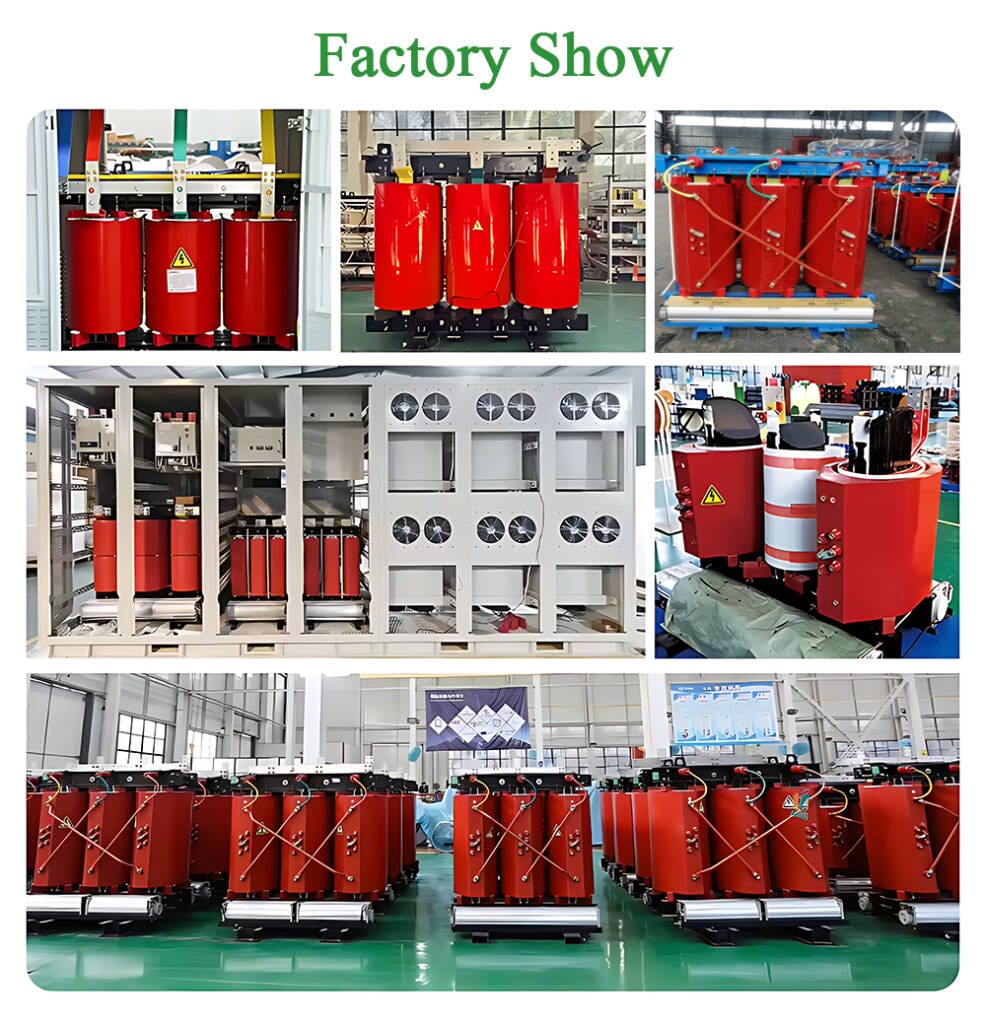
Dry-Type vs. Oil-Immersed Transformers: Key Differences
Although both dry-type and oil-immersed transformers operate on theПринцип электромагнитной индукцииfor power conversion, differences in cooling and insulation methods lead to distinct variations instructure, performance, maintenance, and application scenarios.
1. Cooling Medium & Insulation Method
- Dry-Type Transformer: Uses air convection or forced air cooling; insulation materials are solid (epoxy resin, glass fiber, Nomex paper).
- Oil-Immersed Transformer: Relies on insulating oil for both cooling and insulation; higher散热efficiency.
- Key Difference: Dry-type is safer and more environmentally friendly; oil-immersed has higher散热efficiency.
2. Safety & Environmental Impact
- Dry-Type Transformer: Oil-free, eliminates leakage and fire risks; environmentally friendly; often used in densely populated or special fire-safe locations.
- Oil-Immersed Transformer: Risk of oil leakage and fire; potential for harmful gas release or soil pollution in certain accident scenarios.
- Key Difference: Dry-type has clear advantages in safety and environmental protection.
3. Operation & Maintenance
- Dry-Type Transformer: Relatively simple structure, long maintenance intervals, minimal daily inspection needed, quiet operation.
- Oil-Immersed Transformer: Requires regular testing of oil quality, oil level, oil temperature, and oil replenishment/replacement; higher maintenance cost.
- Key Difference: Dry-type has simpler O&M; oil-immersed maintenance is more complex.
4. Heat Dissipation & Overload Capacity
- Dry-Type Transformer: Limited by air cooling, weaker overload capability, sensitive to temperature rise.
- Oil-Immersed Transformer: High散热efficiency due to oil convection, allows short-term overload operation, suitable for high-power applications.
- Key Difference: Oil-immersed is more suitable for high-load, high-capacity scenarios.
5. Size & Cost
- Dry-Type Transformer: Larger physical size and weight for the same capacity; higher manufacturing cost.
- Oil-Immersed Transformer: Smaller size, lighter weight, lower manufacturing cost.
- Key Difference: Oil-immersed has advantages in economy and space utilization.
6. Application Environment
- Dry-Type Transformer: Mostly used indoors, densely populated areas (e.g., malls, hospitals, subways, airports, office buildings, data centers).
- Oil-Immersed Transformer: Mostly used outdoors, large transmission systems, power plants, industrial parks.
- Key Difference: Dry-type leans towards “safety + indoor”; oil-immersed leans towards “high power + outdoor”.
7. Service Life & Reliability
- Dry-Type Transformer: If insulating materials age or crack, repair is difficult, often requiring complete replacement.
- Oil-Immersed Transformer: Lifespan can be extended through regular oil replacement or purification with proper maintenance.
- Key Difference: Oil-immersed can have a longer lifespan with proper maintenance but carries higher risks; dry-type is more “hassle-free.”
8. Application Scenario Interpretation
- Dry-Type Transformer: The “safety-first choice” for indoor locations like subway stations, office buildings, and hospitals, avoiding fire hazards while reducing noise and maintenance workload.
- Oil-Immersed Transformer: Irreplaceable in high-power transmission and distribution, e.g., large substations at 110kV and above almost exclusively use oil-immersed types.
Summary:
- Dry-Type = Safe, Eco-friendly, Indoor, Small-Medium Capacity
- Oil-Immersed = Efficient, Economical, Outdoor, Large Capacity
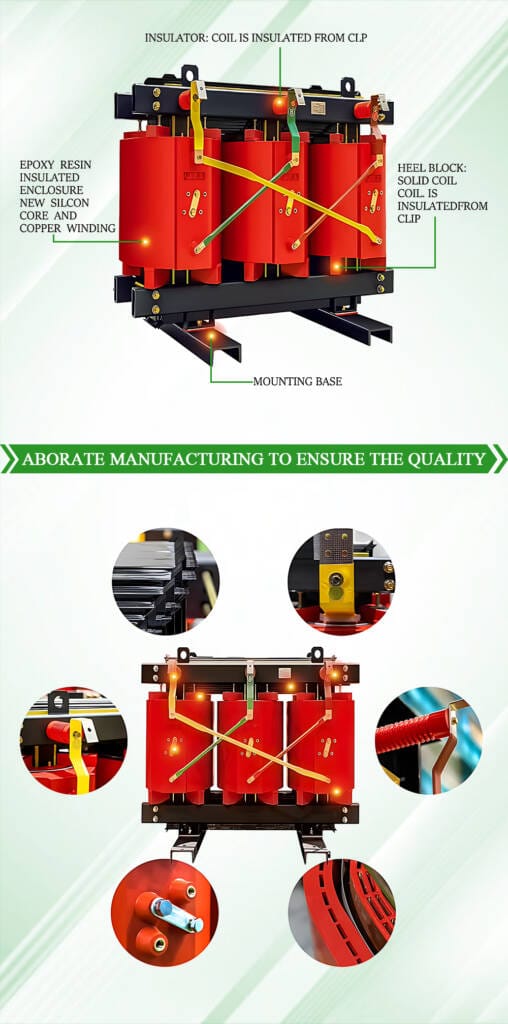
Dry Type Transformer Real-World Application Scenarios
Due to theirhigh safety, good environmental performance, and simple operation and maintenance, dry-type transformers are widely used in modern power systems. Compared to oil-immersed transformers, they are more suitable for indoor, densely populated areas, or locations with high fire safety requirements. Let’s analyze several typical application scenarios.
1. Commercial & Public Buildings
In commercial buildings and public facilities, the power supply system must not only provide stable electricity but also consider safety, environmental impact, and noise control.
- Office Buildings & Shopping Malls: These are densely populated and often located in urban cores with limited space. Using oil-immersed transformers would require additional fire and explosion protection measures and could introduce noise and environmental issues. Therefore, dry-type transformers are the preferred choice.
- Hospitals & Schools: Require extremely high power supply continuity and safety. The oil-free, fire-resistant, low-noise characteristics of dry-type transformers perfectly match these needs. Especially in hospitals, they can be used with emergency power systems to ensure stable power for critical areas like operating rooms and ICUs.
- Airports & Subways: Transportation hubs often have underground spaces with limited ventilation, necessitating equipment with good fire performance. Dry-type transformers, requiring no oil cooling and offering flexible installation, meet these needs well.
- Case: Beijing Subway and Shanghai Hongqiao Airport extensively use epoxy cast resin dry-type transformers to ensure safe operation in complex environments.
2. Industrial Sites
In industrial production, the stability of the power supply directly impacts output and safety. Different types of factories have different requirements for transformers:
- Chemical Plants: Often contain flammable and explosive substances. Oil-immersed transformers pose a fire hazard, so high fire-resistance dry-type transformers must be used.
- Electronics & Food Plants: These industries have strict requirements for cleanliness and environmental protection. Oil-immersed types pose a potential pollution risk, while oil-free dry-type transformers are ideal.
- Manufacturing & Heavy Industry: Some large workshops have high electricity demands; forced air-cooled (AF) dry-type transformers can be selected to enhance short-term overload capacity.
- Case: In a German semiconductor factory, all workshops use Class H insulated dry-type transformers to ensure safe power supply under high-temperature, continuous operation conditions.
3. New Energy & Green Energy Sector
With the rapid development of clean energy like wind and solar power, the application of dry-type transformers in grid connection points is increasing.
- Wind Farms: Wind turbine nacelles have limited space and large environmental temperature variations, requiring highly reliable equipment. Epoxy resin cast dry-type transformers resist moisture and salt spray, so operators commonly install them for internal power distribution within nacelles.
- Solar Power Plants: Often built in harsh environments like deserts and plateaus. Dry-type transformers offer strong environmental adaptability for long-term stable operation.
- Distributed Energy Systems: Such as rooftop solar PV and campus microgrids. Operators directly connect dry-type transformers to the grid in densely populated areas, leveraging their moderate size, safety, and eco-friendliness.
- Case: A large solar power plant in Spain uses a full set of dry-type transformer systems, reducing maintenance pressure while complying with strict EU environmental standards.
4. Special Locations
Some special places have extremely high requirements for safety and reliability, where the advantages of dry-type transformers are more prominent:
- High-Rise Buildings: Limited space and high fire safety requirements; dry-type transformers can be installed directly in basements or floor electrical rooms.
- Tunnels & Subway Tunnels: Narrow spaces, limited ventilation, where fire is extremely difficult to extinguish; oil-free, fire-resistant dry-type transformers are suitable for power distribution in tunnels.
- Ships & Offshore Platforms: High humidity and severe salt spray environments; using cast resin dry-type transformers avoids oil leakage and marine pollution.
- Data Centers: Require extremely high power supply reliability and energy efficiency. Dry-type transformers,配合intelligent monitoring systems, enable real-time temperature and load detection, ensuring stable power supply.
- Case: A major international data center uses intelligent dry-type transformers meeting the highest international energy efficiency standards, achieving both green energy savings and safe power supply.
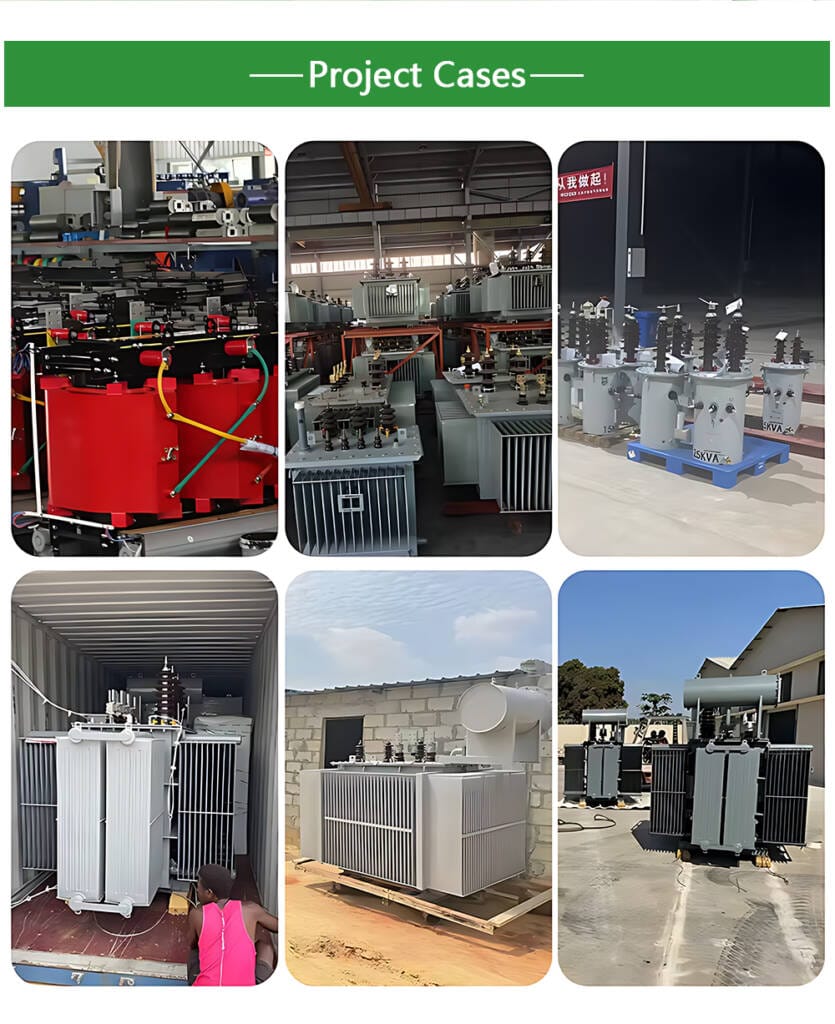
Dry Type Transformer Insights and Summary
As a vital component of modern power systems, dry-type transformers, with their advantages ofsafety, environmental friendliness, easy maintenance, and strong adaptability, are gradually replacing traditional oil-immersed transformers in commercial, industrial, new energy, and special environments, becoming an important carrier for green power solutions. Analyzing the previous sections, we can summarize the following key insights:
1. Safety and Reliability are Core Values
The oil-free design of dry-type transformers gives them inherent advantages over oil-immersed types infire prevention, explosion protection, and pollution avoidance.
- For densely populated urban buildings, subways, hospitals, etc., safety is the primary consideration.
- For special environments (e.g., tunnels, offshore platforms, high-rises), the fire resistance, moisture resistance, and salt spray resistance of dry-type transformers directly protect equipment and personnel safety.
- Insight: Prioritize safety during selection and application, especially regarding fire rating and insulation system reliability.
2. Proper Selection Determines Lifespan and Benefits
Every parameter, from capacity, voltage level, and insulation class to cooling method and protection level, influences the performance and lifespan of a dry-type transformer.
- Improper capacity and load matching → Prone to long-term overload, accelerating insulation aging.
- Improper cooling method selection → Can cause excessive winding temperature rise, affecting service life.
- Insufficient protection level → Susceptible to moisture or dust contamination, increasing failure risk.
- Insight: Selecting a dry-type transformer shouldn’t be based on price alone; it requires comprehensive consideration of the operating environment, load characteristics, and long-term O&M costs.
3. Application Scenario Determines Transformer Type
Dry-type and oil-immersed transformers are not about which is superior, but about playing to their respective strengths:
- Dry-Type Transformer: Most suitable for indoor, small-to-medium capacity locations with high fire safety requirements.
- Oil-Immersed Transformer: Applicable for high capacity, long-distance transmission/distribution, or outdoor environments.
- Insight: Understanding scenario requirements and choosing the most compatible transformer type ensures safe, economical, and efficient system operation.
4. Technological Innovation Drives Industry Development
With advancements in epoxy casting, VPI, intelligent temperature control, and IoT monitoring technologies, dry-type transformers continue to break through in performance and application scenarios:
- High insulation classes & intelligent monitoring → Extend lifespan, improve reliability.
- Forced air cooling & energy-saving design → Enhance load capacity, reduce energy consumption.
- Eco-friendly materials & protective design → Meet green building and new energy project requirements.
- Insight: Paying attention to the latest technological trends can enhance project safety and economy while meeting green and energy-saving requirements.
5. A Driving Force for Green Power and Sustainable Development
Dry-type transformers, being oil-free, low-noise, low-maintenance, safe, and environmentally friendly, are key components in modern green buildings, data centers, and new energy power stations. They not only meet modern power safety needs but also align withsustainable development and low-carbon environmental protection理念.
- Insight: Against the backdrop of rapid green energy and smart grid development, dry-type transformers have broad application prospects and are an important direction for future urban distribution and industrial power supply.
6. Concluding Remarks
Leveraging their unique advantages and wide applicability, dry-type transformers have become an indispensable “Green Guardian” in modern power systems:
- They use safety, environmental protection, and reliability to guard every power line.
- They enhance system efficiency and lifespan through proper selection and technological innovation.
- They demonstrate value across multiple fields: commercial, industrial, new energy, and special locations.
- Their widespread adoption signifies the power system’s continuous advancement towards safety, efficiency, greenness, and intelligence.
It can be said that dry-type transformers are not just power supply equipment but also safety barriers and green standards for modern cities and industry. Choosing the right dry-type transformer lays the foundation forsafe, reliable, low-carbon, and efficientlong-term development for both enterprises and society.

